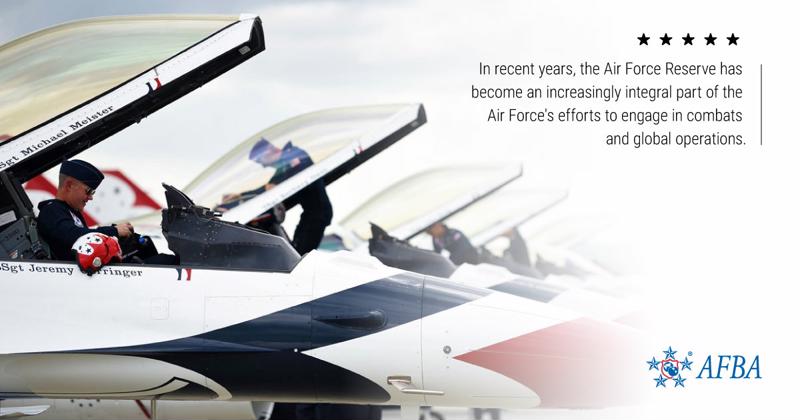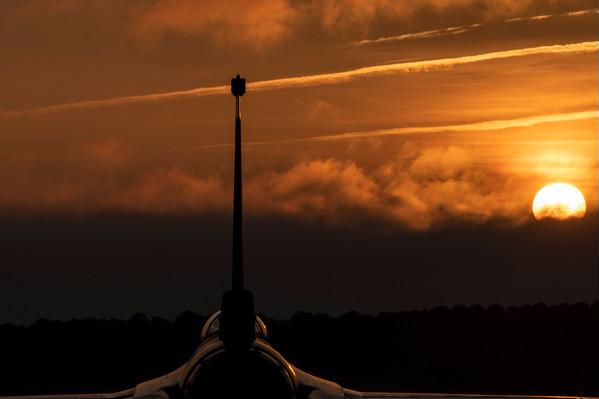On April 14, 2019, the United States Air Force Reserve will turn 71 years young.
Last year, the Air Force Reserve held a cake-cutting ceremony at the Pentagon in honor of its 70th anniversary. Now that the military organization is turning 71, you may marvel at its advanced age, but it is actually the youngest of all the various reserve components. At 110 years old, the U.S. Army Reserve is the oldest of the bunch, followed by the 104-year-old Navy Reserve, the 102-year-old Marine Corps Reserve and the 78-year-old Coast Guard Reserve. Even the Air National Guard is one year younger than the Air Force Reserve.
Despite being the youngest sibling in the family of reserve corps, the Air Force Reserve has piled up an impressive number of accomplishments over its more than seven decades of history.
Over 70 years of distinguished service
Although the reserve component traces its lineage back over a century to the Reserve Airpower that was established by the National Defense Act of 1916, the official birth date of the U.S. Air Force Reserve is April 14, 1948. That's the date when the Army Air Corps Reserve was transferred to the Air Force, officially creating the Air Force Reserve as a separate component. The air reserve was formally established by President Harry Truman, who was seeking to create a program similar to one established during WWI, in which Reservists stood ready to serve during wartime.
The Air Force Reserve replaced Continental Air Command, which inactivated in 1968, at which point AFRES assumed command of all personnel, equipment and aircraft previously assigned to ConAC.
In 1970, Secretary of Defense Melvin Laird adopted the Total Force concept, which Secretary of Defense James Schlesinger declared policy in 1973. Once implemented, the Air Force Reserve became a multi-mission force, flying the same modern aircraft as the active Air Force and being held to the same readiness standards and inspections as regular Air Force units.
During the Cold War, Reservists continually volunteered for both military and humanitarian efforts, from the Israeli Airlift of 1973 to the resupply and evacuation missions undertaken in the aftermath of 1989's Hurricane Hugo.

Within days of Saddam Hussein's invasion of Kuwait in 1990, Air Force Reserve airlift and tanker crews were in the air, with AFRES special operations and rescue forces and Air Force Reserve A-10s operating close to the frontlines. According to the Air Force Reserve Command, it was a Reservist who scored the first-ever A-10 air-to-air kill.
When the United States was attacked by terrorists on September 11, 2001, Air Force Reservists were quickly out in full force, with Air Force Reserve F-16 fighters flying combat air patrols over America's cities with KC-135 tanker and AWACs providing air refuelings and security.
In recent years, the Air Force Reserve has become an increasingly integral part of the Air Force's efforts to engage in combats and global operations.
Today there are nearly 70,000 Citizen Airmen stationed in communities throughout the United States and overseas, serving every Combatant Command in air, space, and cyberspace.
"From the sands of Iraq to the mountains of Afghanistan from the jungles of South America to the Antarctic icecap, in the skies above the nation, inside hurricanes threatening our coastal areas and through wildfires endangering our countryside, dedicated Reservists answer the call to duty symbolizing the values of integrity, service before self, and excellence in all we do," according to the Air Force Reserve's official mission statement.
In honor of its 71 years of service to the United States, Americans everywhere should take the opportunity on April 14 to salute the U.S. Air Force Reserve for providing Citizen Airmen prepared to "fly, fight and win."


